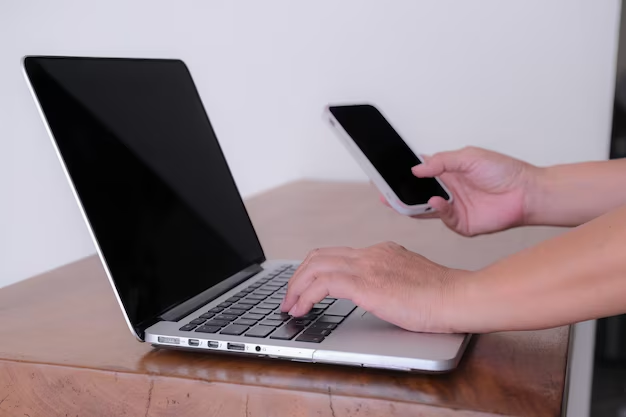Seamlessly Transfer Videos from Your Phone to Your Computer: Step-by-Step Guide
In today's digital age, smartphones have become our pocket-sized cameras, capturing countless moments and memories. But what do you do when your device starts to run out of space, or you want to edit your videos using more robust software on your computer? Transferring videos from your phone to your computer can seem daunting, but it doesn't have to be. Whether you're tech-savvy or a complete beginner, this guide will walk you through every step in transferring your precious videos quickly and efficiently.
Why Transfer Videos to Your Computer?
Transferring videos from your phone to your computer opens up a world of possibilities:
- Storage Management: Free up space on your phone for more apps, photos, and videos.
- Advanced Editing: Use powerful video editing software available on computers.
- Backup: Safeguard your memories against data loss.
- Sharing and Collaboration: More easily share files with friends and family or work on collaborative projects.
Different Methods to Transfer Videos
1. Using a USB Cable
This traditional method is simple and universal, supporting most smartphones and computers.
Steps for Android:
- Connect your Android phone to your computer using a USB cable.
- On your phone, select "File Transfer" from the USB preferences menu.
- On your computer, go to "This PC" (Windows) or "Finder" (Mac) and locate your device.
- Navigate to the "DCIM" or "Videos" folders to find your videos.
- Drag and drop the desired videos to a folder on your computer.
Steps for iPhone:
- Connect your iPhone to your computer using a USB or Lightning cable.
- On your iPhone, tap "Trust" when prompted.
- Use "Photos" (for Windows) or "Image Capture" (for Mac) to import your videos.
2. Wireless Transfer via Cloud Services
Cloud services are perfect for those who prefer wireless, hassle-free methods. Popular options include Google Drive, iCloud, and Dropbox.
Using Google Drive:
- Install the Google Drive app on your phone and log in.
- Upload your videos to Drive.
- On your computer, access Google Drive from a web browser and download the videos.
Using iCloud (for iPhone users):
- Ensure iCloud is set up on your iPhone and your videos are synced.
- On your Mac or PC, access iCloud through Finder or the iCloud website to download the videos.
3. Bluetooth and Wi-Fi Direct
These methods are slower but handy if there's no internet.
Bluetooth Transfer:
- Enable Bluetooth on both devices and pair them.
- Send the video file from your phone to your computer's paired device.
Wi-Fi Direct (for supported Android devices):
- Turn on Wi-Fi Direct on both devices.
- Select the video file and choose Wi-Fi Direct as the method to send.
4. Third-Party Apps
Applications like AirDroid, SHAREit, or Xender offer quick and user-friendly wireless transfers across devices.
Using AirDroid:
- Install AirDroid on your phone and create an account.
- On your computer, go to the AirDroid web portal and log in.
- Upload the video to AirDroid and download it from the web portal.
Video Compression Considerations
Transferring videos can often come with the challenge of large file sizes. Here's how to manage:
- Compress videos using apps like VLC or HandBrake to reduce size without significant quality loss.
- Consider adjusting settings on your phone to shoot videos in lower resolution if high quality isn't needed.
Common Troubleshooting Tips
Even with the best methods, you might hit a snag. Here's how to troubleshoot:
Connection Issues:
- Ensure your USB cable supports data transfer (not just charging).
- Restart your devices if the connection is unrecognized.
Transfer Speed:
- For USB: Use the original or high-speed cables and ports.
- For wireless: Ensure strong, stable internet.
Compatibility:
- Ensure your software (like drivers or apps) is up-to-date.
- iPhone users: Ensure iTunes is installed for PC file transfers.
Summary of Methods and Tips
Here's a quick reference guide to help you decide which method works best for you:
| Method | Speed | Internet Required | Difficulty | Best For |
|---|---|---|---|---|
| USB Cable | Fast | No | Easy | Quick, large file transfers |
| Cloud Services | Varies | Yes | Moderate | Backup and access from multiple devices |
| Bluetooth | Slow | No | Moderate | Small file transfers without internet |
| Wi-Fi Direct | Fast | No | Moderate | Quick, local network transfer |
| Third-Party Apps | Fast | Varies | Easy | Seamless wireless transfers with options |
🔥 Quick Tips:
- Use USB cables for reliability and speed.
- Transfer small, less urgent files via Bluetooth to save data.
- Deploy cloud services for easy access and sharing across devices.
As technology continues to evolve, transferring videos from your phone to your computer becomes even more intuitive. Whether you prefer the simplicity of a USB cable or the convenience of a cloud service, there's a method that fits your needs. Experiment with each approach, and soon you'll find that moving your videos off your phone and onto your computer is a straightforward, manageable process. Enjoy your new-found space and explore endless creative possibilities with your video content on the big screen!

Related Topics
- How Can I Transfer Contacts To My New Phone
- How Can I Transfer Music From My Ipod To Computer
- How Can I Transfer My Contacts To Another Phone
- How Can I Transfer Photos From Camera To Computer
- How Can You Transfer Text Messages To a New Phone
- How Do I Transfer Apps To My New Phone
- How Do I Transfer Contacts From One Phone To Another
- How Do I Transfer My Contacts To Another Phone
- How Do I Transfer My Contacts To My New Phone
- How Do I Transfer Phone Contacts To New Phone